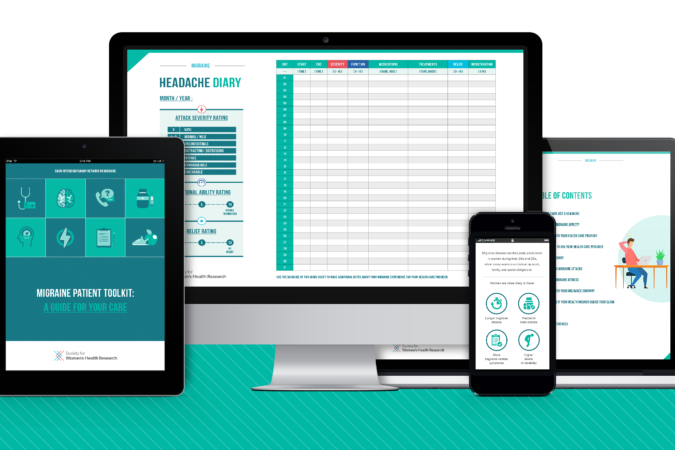A migraine attack is not just a headache. In addition to severe head pain, people with migraine often experience symptoms including nausea, vomiting, and sensitivity to light and sound that can last for days. Migraine is a neurological disease that affects about 14% of the global population and requires patients and health care providers to work together to manage disabling symptoms that can cause significant disruption to patients’ lives.
To assist patients in navigating this process, the Society for Women’s Health Research (SWHR) created the Migraine Patient Toolkit: A Guide to Your Care, a new resource that provides useful information about migraine diagnosis and treatment options, as well as tips on interacting with health care providers and health insurance companies to achieve the best possible outcomes.
Clear communication between patients and health care providers is necessary for the accurate diagnosis of migraine and creation of a treatment plan tailored to the individual patient. This toolkit is designed to facilitate productive conversations between patients and health care providers so people with migraine can get the most out of their health care visit.
In addition, the toolkit guides patients on the sometimes-overwhelming process of managing health insurance. Because many people with migraine encounter challenges with insurance coverage when trying new treatments or a combination of therapies, this toolkit contains information on how to appeal denied health claims.
Vetted by migraine patients and medical experts, the toolkit includes:
- An infographic on what migraine is and who it affects
- A guide to talking with health care providers
- A monthly diary template for patients to track migraine attacks
- Lists of lifestyle and medical interventions for preventing and treating attacks
- A guide to talking with health insurance companies
- Steps on what to do if a health insurer denies your claim
- A glossary of migraine terms
Download the Migraine Patient Toolkit.
The toolkit is a project of SWHR’s Interdisciplinary Network on Migraine, a diverse group of researchers, health care providers, patients, and health care opinion leaders working to educate and engage society about the burden of migraine. Women shoulder a significant amount of this burden. Migraine is three times more common in women than men, and women are more likely to experience longer and more intense migraine attacks, more symptoms such as nausea and visual disturbances, and higher levels of disability. SWHR’s Migraine Network works to identify gaps in migraine research and care, and then develops strategies and tools to improve health outcomes for both women and men.
Questions? Contact us at communications@swhr.org.
